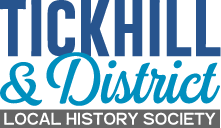

Tickhill and the 1807 General Election
Sixty six years after the County Constituency of Yorkshire had a contested parliamentary election, as outlined in the previous Newsletter, 1807 saw another electoral contest. Yorkshire was one of only 13 counties which held a poll for this General Election. Many people in Tickhill eligible to vote between 1741 and 1807 would not have had the opportunity to do so in their lifetime. The three candidates for the two seats in the 1807 election were Henry Lascelles, son of the Earl of Harewood, Charles William Wentworth Fitzwilliam known as Viscount or Lord Milton, son of Earl Fitzwilliam, and William Wilberforce. 1807 was the year that Wilberforce's efforts led to an Act abolishing the slave trade a few weeks before the election was called. Wilberforce had been returned unopposed at four previous elections, having served as one of Yorkshire's MPs since 1784. Wilberforce topped the poll, held between 20 May and 5 June 1807 at York Castle, with 11,808 votes, followed by Lord Milton with 11,177 votes, both of whom were duly elected. Henry Lascelles only just missed being elected with 10,990 votes. He had previously been MP for Yorkshire from 1796-1806.
This election was the most costly one fought in Yorkshire to that point, with the three candidates spending nearly £¼ million between them, food, alcohol, transport and printing accounting for some of the costs. A whole range of posters, broadsheets, handbills and even song sheets were circulated, such as a handbill in which Wilberforce wrote: 'My conduct will continue to be governed by those constitutional and independent principles which have received your approbation during three and twenty years'.
In 1741 the great majority of Tickhill's 61 voters had supported the Tory candidate. In 1807 the local voters' preferences now favoured a Whig candidate, as shown in the table below. Only 28 of the 85 voters voted for 2 candidates, 22 of them for Wilberforce and Lascelles. As in 1741 the Tickhill voters were predominantly involved in farming (42) and trade (34), (the poll book and the copy printed in York now recording occupations, unlike the 1741 poll book). Five voters were listed as esquire or gentleman, while 4 were in professions: a surgeon, a land surveyor, a schoolmaster and Tickhill's vicar, the Revd T F Twigge, who voted for Wilberforce and Milton.
Overall these local results show that Wilberforce's considerable efforts to abolish the slave trade did not carry the most weight in this area, but, of the two Tory candidates, Wilberforce was more popular than Lascelles, except in Bawtry. Presumably the Fitzwilliam family from Wentworth had a greater influence in this part of the county than had the more northerly based Harewood family. More significantly, the chairman of Lord Milton's election committee in this area was William Wrightson of Cusworth Hall, a man with considerable local influence. Every one of Wadworth's 17 voters chose Lord Milton, no one using their second vote; this was not the only village in south Yorkshire with a similar voting pattern. In the local communities the number of men who travelled to York to vote had increased since 1741, except for Maltby and Wadworth. The new parliament following the 1807 election saw a narrow Tory victory.
| Total Voters | Votes Cast | |||
| Wilberforce | Lascelles | Milton | ||
| (Tory) | (Tory) | (Whig) | ||
| Bawtry | 34 | 15 | 21 | 13 |
| Doncaster | 208 | 82 | 53 | 151 |
| Maltby | 9 | 3 | 0 | 9 |
| Rotherham | 107 | 32 | 3 | 104 |
| Tickhill | 85 | 36 | 24 | 55 |
| Wadworth | 17 | 0 | 0 | 17 |